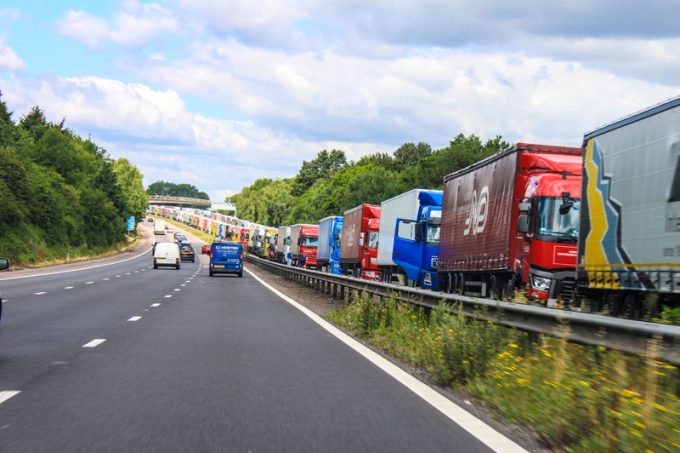UK to again delay start of checks on EU imports
Surprise, surprise: the UK government has decided yet again to delay import checks, it has ...

The UK government must boost investment and improve facilities for truck drivers if it wishes to attract recruits to an industry suffering a 35,000-driver shortfall, according to the Freight Transport Association (FTA).
The FTA call came in the wake of a report by Transport Focus on the need for safe parking and decent driver facilities at a planned lorry area for cross-Channel services announced in the 2015 Autumn Statement by then chancellor George Osborne.
“What we are keen to ensure is the facilities for drivers using this area,” a spokesperson for the FTA told The Loadstar. “We want assurances of toilets, showers and places where they are able to find food, and we want these built into the planning process of the new facility.”
Transport Focus polled more than 245 drivers on their experiences of cross-Channel disruptions and on what they would like to see at the new £250m, 3,600-vehicle parking facility near Junction 11 of the M20 in Kent, designed to replace the much-maligned Operation Stack.
Natalie Chapman, FTA head of policy for London and the south-east, said the findings by Transport Focus reinforced calls by the FTA for an off-road solution to Operation Stack.
“Queuing vehicles on the motorway not only causes havoc to other motorists, residents and businesses, but it means that only very limited welfare facilities are available for drivers in the queue,” she said.
In addition to showers and toilets – deemed a necessity by drivers – and high-security parking and quality food outlets, drivers also want better information from electronic signs on wait times as well as the area being open year-round.
Under the conditions laid out by Mr Osborne, the facility would only be available during cross-Channel disruptions.
While the FTA echoed driver calls for year-round availability, the spokesperson recognised that there would be logistical issues to overcome in times of cross-Channel disruption and traffic congestion.
But the spokesperson said the calls underlined a much bigger picture – the need to improve support for the country’s HGV drivers.
“Failure to supply adequate facilities has a knock-on impact to the rest of the population,” said the spokesperson. “Truck drivers find themselves pulling up in towns and villages to take a rest, use a toilet or find something to eat. This causes congestion.”
The FTA was sympathetic to residents whose lives were being disrupted, she said, but added that drivers needed to take rest breaks and often residential areas were the most readily available.
“It would not be acceptable for any other employee to be stripped of their rights of access to food and suitable toilet facilities. But for some reason, people don’t seem to consider it with truck drivers.”
In 2013, driver shortages hit 69,551, and while that figure has halved since, the FTA said the industry was still struggling to find new drivers. Attracting younger people – the average driver age is 48 – and women, who make up just 1% of driver numbers, has proved particularly difficult.
“How can we attract people to an industry that is so badly cared for?” the spokesperson added.
Comment on this article